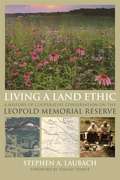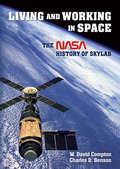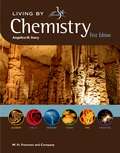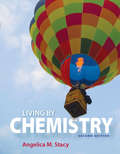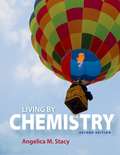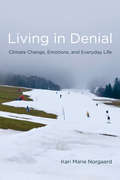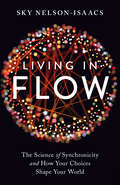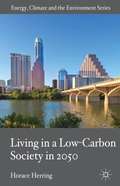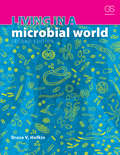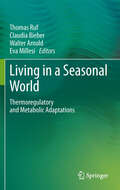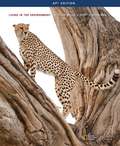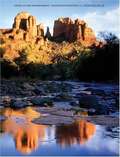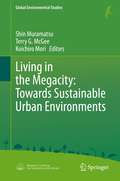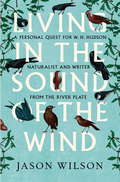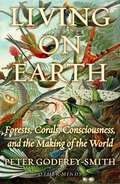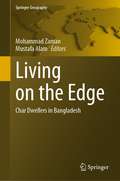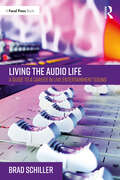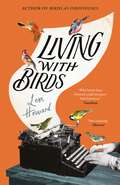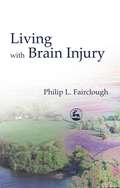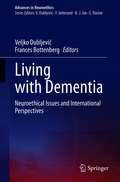- Table View
- List View
Living a Land Ethic
by Stephen A. LaubachIn 1935, in the midst of relentless drought, Aldo Leopold purchased an abandoned farm along the Wisconsin River near Baraboo, Wisconsin. An old chicken coop, later to become famous as the Leopold "Shack," was the property's only intact structure. The Leopold family embraced this spent farm as a new kind of laboratory-a place to experiment on restoring health to an ailing piece of land. Here, Leopold found inspiration for writing "A Sand County Almanac," his influential book of essays on conservation and ethics. "Living a Land Ethic" chronicles the formation of the 1,600-acre reserve surrounding the Shack. When the Leopold Memorial Reserve was founded in 1967, five neighboring families signed an innovative agreement to jointly care for their properties in ways that honored Aldo Leopold's legacy. In the ensuing years, the Reserve's Coleman and Leopold families formed the Sand County Foundation and the Aldo Leopold Foundation. These organizations have been the primary stewards of the Reserve, carrying on a tradition of ecological restoration and cooperative conservation. Author Stephen A. Laubach draws from the archives of both foundations, including articles of incorporation, correspondence, photos, managers' notes, and interviews to share with readers the Reserve's untold history and its important place in the American conservation movement. "
Living and Surviving in Harm's Way: A Psychological Treatment Handbook for Pre- and Post-Deployment of Military Personnel
by Arthur Freeman Sharon Morgillo Freeman Bret A MooreIn Living and Surviving in Harm's Way, experts investigate the psychological impact of how warriors live and survive in combat duty. They address the combat preparation of servicemen and women, their support systems, and their interpersonal and intrapersonal experiences. The text maintains a focus on cognitive-behavioral interventions for treating various combat-related disorders, and addresses psychological health and adjustment after leaving the battlefield. The text is logically organized for easy reading and reference, and covers often overlooked topics such as preparation and training of service personnel, women in combat, and the indirect effects of combat stress on family. This book is written by clinicians who have in some ways experienced what they write about, and resonates with mental health professionals, servicemen and women, and their families. Any clinician hoping to treat a serviceman or woman effectively cannot afford to overlook this book.
Living and Working in Space: The NASA History of Skylab (Dover Books on Astronomy #No. 4208)
by Paul Dickson William David Compton Charles D. BensonThe official record of America's first space station, this book from the NASA History Series chronicles the Skylab program from its planning during the 1960s through its 1973 launch and 1979 conclusion. Definitive accounts examine the project's achievements as well as its use of discoveries and technology developed during the Apollo program. 1983 edition.
Living by Chemistry
by Angelica M. Stacy Jennifer Claesgens Greg Hargreaves Janice A. Coonrod Ken Cursoe Tom Ward Ladie Malek Jeffrey DowlingNIMAC-sourced textbook
Living by Chemistry
by Jennifer Claesgens Janice A. CoonrodDesigned to help all students to learn real chemistry, Living By Chemistry is a full-year high school curriculum that incorporates science practices with a guided-inquiry approach. Students of all levels will gain a deep understanding of chemistry with this program. With Living By Chemistry, students learn chemistry in the same way that chemists work - by asking questions, collecting evidence and thinking like scientists. Living By Chemistry is the product of a decade of research and development in high school classrooms, focusing on optimizing student understanding of chemical principles. Author Angelica Stacy assisted in the development of the NGSS standards and served on the AP#65533; Chemistry redesign committee. She designed Living By Chemistry as an introduction for students who will take AP#65533; Chemistry or additional college classes. The curriculum was developed with the belief that science is best learned through first-hand experience and discussion with peers. Guided inquiry allows students to actively participate in, and become adept at, scientific processes and communication. These skills are vital to a student's further success in science as well as beneficial to other pursuits. Formal definitions and formulas are frequently introduced after students have explored, scrutinized, and developed a concept, providing more effective instruction. LBC's innovative curriculum offers much more than traditional programs. To help engage students of all levels, the curriculum provides a variety of learning experiences through activities, discussions, games, demos, lectures, labs and individual work. Teachers will save time with the new teacher's edition because all components of a successful lesson, from warm-up to wrap-up are included in a familiar wrap around style.
Living by Chemistry (Second Edition)
by Angelica M. Stacy Jennifer Claesgens Janice A. CoonrodIn this course, you will actively participate in uncovering the chemistry in the laboratory and in the world around you.
Living in Denial: Climate Change, Emotions, and Everyday Life
by Kari Marie NorgaardAn analysis of why people with knowledge about climate change often fail to translate that knowledge into action.Global warming is the most significant environmental issue of our time, yet public response in Western nations has been meager. Why have so few taken any action? In Living in Denial, sociologist Kari Norgaard searches for answers to this question, drawing on interviews and ethnographic data from her study of "Bygdaby," the fictional name of an actual rural community in western Norway, during the unusually warm winter of 2000-2001.In 2000-2001 the first snowfall came to Bygdaby two months later than usual; ice fishing was impossible; and the ski industry had to invest substantially in artificial snow-making. Stories in local and national newspapers linked the warm winter explicitly to global warming. Yet residents did not write letters to the editor, pressure politicians, or cut down on use of fossil fuels. Norgaard attributes this lack of response to the phenomenon of socially organized denial, by which information about climate science is known in the abstract but disconnected from political, social, and private life, and sees this as emblematic of how citizens of industrialized countries are responding to global warming.Norgaard finds that for the highly educated and politically savvy residents of Bygdaby, global warming was both common knowledge and unimaginable. Norgaard traces this denial through multiple levels, from emotions to cultural norms to political economy. Her report from Bygdaby, supplemented by comparisons throughout the book to the United States, tells a larger story behind our paralysis in the face of today's alarming predictions from climate scientists.
Living in Flow: The Science of Synchronicity and How Your Choices Shape Your World
by Joseph Jaworski Sky Nelson-IsaacsHarness the principles of synchronicity and flow to live better, work smarter, and find purpose in your lifeWhen we align with circumstance, circumstance aligns with us. Using a cutting-edge scientific theory of synchronicity, Sky Nelson-Isaacs presents a model for living "in the flow"--a state of optimal functioning, creative thinking, and seemingly effortless productivity. Nelson-Isaacs explains how our choices create meaning, translating current and original ideas from theoretical physics and quantum mechanics into accessible, actionable steps that we can all take to live lives in better alignment with who we are and who we want to be. By turns encouraging and empowering, Living in Flow helps us develop an informed relationship to meaning-making and purposefulness in our lives. From this we can align ourselves more effectively within our personal, professional, and community relationships to live more in flow.
Living in a Low-Carbon Society in 2050
by Horace HerringCombining theory, case studies and speculative fiction, a range of contributors, from leading UK academics to pioneering renewable activists, create a compelling picture of the potential perks and pitfalls of a low carbon future.
Living in a Microbial World: Garland Science Learning System Redemption Code
by Bruce HofkinAs with the first edition, this second edition of Living in a Microbial World is written for students taking a general microbiology course, or a microbiology-based course for non-science majors. The conversational style and use of practical, everyday examples make the essential concepts of microbiology accessible to a wide audience. While using this approach, the text maintains scientific rigor with clear explanations spanning the breadth of microbiology, including health, evolution, ecology, food production, biotechnology, and industrial processes. Each chapter contains a series of case studies based on microbiology in the news, in history, and in literature. There are questions at the end of each case study and the end of each chapter, as well as an online quiz with help on answering the questions. The text, questions, and cases have been updated to reflect the changing influence of microbiology in the world today, from the microbiome, to new disease outbreaks (Ebola and Zika) and antibiotic resistance, to new biotechnology tools (CRISPR-Cas).
Living in a Seasonal World
by Walter Arnold Claudia Bieber Eva Millesi Thomas RufThis book summarises the newest information on seasonal adaptation in animals. Topics include animal hibernation, daily torpor, thermoregulation, heat production, metabolic depression, biochemical adaptations, neurophysiology and energy balance. The contributors to this book present interdisciplinary research at multiple levels ranging from the molecular to the ecophysiological, as well as evolutionary approaches. The chapters of this book provide original data not published elsewhere, which makes it the most up-to-date, comprehensive source of information on these fields. The book's subchapters correspond to presentations given at the 14th International Hibernation Symposium in August 2012 in Austria. This is a very successful series of symposia (held every four years since 1959) that attracts leading researchers in the field. Like the past symposia, this meeting - and consequently the book - is aimed not only at hibernation but at covering the full range of animal adaptations to seasonal environments. For the next four years, this book will serve as the cutting-edge reference work for graduate students and scientists active in this field of physiology and ecology. .
Living in the Environment: Concepts, Connections, and Solutions
by G. Tyler Miller Scott E. Spoolman Jr.In this current, thought-provoking environmental science textbook, G. Tyler Miller and new coauthor Scott Spoolman bring the concept of sustainability to the forefront. Students are engaged and motivated with vivid case studies and hands-on quantitative exercises. As the authors showcase four scientific principles of sustainability, they immerse students in the many practical steps they, as individuals, can take toward more sustainable lifestyles. The book's new concept-centered format transforms complex environmental topics and issues into key concepts that students will understand and remember.
Living in the Environment: Concepts, Connections, and Solutions
by G. Tyler MillerThis undergraduate textbook provides the scientific base for understanding environmental concerns, describes the primary natural resource and environmental quality problems being faced, and evaluates solutions to those problems. The fourteenth edition groups the biology chapters together, transfers the guest essays to the web site, and adds several new topics, such as genetic engineering, bioterrorism, and fuel cell cars. The CD-ROM contains colorful animations and quizzes. Annotation ©2004 Book News, Inc. , Portland, OR (booknews. com)
Living in the Megacity: Towards Sustainable Urban Environments (Global Environmental Studies)
by Shin Muramatsu Terry G. McGee Koichiro MoriThis book tackles the challenging issues raised by the growth of large megacities from diverse perspectives and approaches. The central question raised by the growth of megacities is what effect their growth will have on the ability of the global population to live in sustainable, livable, and safe societies. In Part I, important issues on the relationships between megacities and sustainability of the global environment are specified. Part II shows what can be learned from the history and diversity of megacities to solve challenging issues of the present. We present practical approaches that can solve the issues of megacities particularly focusing on human activities that seek the more harmonious relationship between life amenities and the natural environment: population density and urban built environment; production and trade; and environmental education and enlightenment. Part III aims to answer the question, what aspects of megacities should be measured and assessed? Barometers are necessary to control human activities in megacities. We consider how to measure and assess performances of megacities, reviewing some cases of indicators that authors have developed. This publication highlights the challenging issues of the relationships between megacities and sustainability of the global environment and related issues that have accrued from them, based on the following three scales: long-term time scale from the past to the present and future; a vast spatial scale that links global space with local spaces; and the scale of various aspects of human socio-economic activities in megacities.
Living in the Sound of the Wind: A Personal Quest for W.H. Hudson, Naturalist and Writer from the River Plate
by Jason WilsonW. H. Hudson was brought up on the pampas, where he learnt from gauchos about frontier life. After moving to London in 1874, Hudson lived in extreme poverty. Like his friend Joseph Conrad, Hudson was an exile, adapting to England. He never returned to Argentina. Wilson unravels Hudson's English dream, his natural history rambles, and his work to protect birds. He remains both a complex witness to his homeland before mass immigration and to his England of the mind, before the urban sprawl.
Living in the Sound of the Wind: A Personal Quest for W.H. Hudson, Naturalist and Writer from the River Plate
by Jason WilsonW. H. Hudson was brought up on the pampas, where he learnt from gauchos about frontier life. After moving to London in 1874, Hudson lived in extreme poverty. Like his friend Joseph Conrad, Hudson was an exile, adapting to England. He never returned to Argentina.Wilson unravels Hudson’s English dream, his natural history rambles, and his work to protect birds. He remains both a complex witness to his homeland before mass immigration and to his England of the mind, before the urban sprawl.Praise for Jason Wilson: Tireless, shrewd, erudite Jason Wilson, mixing hard fact and anthology, provides the perfect outfit of allusion and comparative experience - Jonathan Keates, ObserverPut his treasure trove into your pocket. - Anthony Sattin, Sunday TimesThe idea is so simple that it must be original. This inaugural book might prove to be a landmark. - Nicholas Shakespeare, Daily Telegraph
Living on Earth: Forests, Corals, Consciousness, and the Making of the World
by Peter Godfrey-SmithThe bestselling author of Other Minds shows how we and our ancestors have reinvented our planet.If the history of the Earth were compressed down to a year, our species would arise in the last thirty minutes or so of the final hour. But life itself is not such a late arrival: It has existed on Earth for something like 3.7 billion years—most of our planet’s history and over a quarter of the age of the universe (as far as we can tell). What have these organisms—bacteria, animals, plants, and the rest—done in all this time? In Living on Earth, the philosopher Peter Godfrey-Smith proposes a new way of understanding how the actions of living beings have shaped our planet. Where his acclaimed books Other Minds and Metazoa explored the riddle of how conscious minds came to exist on Earth, Living on Earth turns to what happens when we look at the mind from another side—when we come to see organisms as active causes, not merely as results of the evolutionary process. The planet we inhabit is significantly the work of other living beings, who shaped the environments that we ourselves later transformed. To that end, Godfrey-Smith takes us on a grand tour of the history of life on earth. He visits Rwandan gorillas and Australian bowerbirds, returns to coral reefs and octopus dens, considers the impact of language and writing, and weighs the responsibilities our unique powers bring with them, as they relate to factory farming, habitat preservation, climate change, and the use of animals in experiments. Ranging from the seas to the forests, and from animate matter’s first appearance to its future extinction, Godfrey-Smith offers a novel picture of the course of life on Earth and how we might meet the challenges of our time, the Anthropocene.
Living on a Space Shuttle (Rookie Read-About® Science)
by Carmen BredesonThe toilet is like a vacuum cleaner. Being on the ceiling feels the same as being on the floor. Everything floats!
Living on the Edge: Char Dwellers in Bangladesh (Springer Geography)
by Mohammad Zaman Mustafa AlamIn Bangladesh, the chars within the river channels are an important part of its landscape. However, these land masses continue to remain isolated, deprived of services, and pockets of poverty in the country. The char dwellers are vulnerable to natural hazards like flood and erosion. In addition to these hazards, the coastal chars are faced with the imminent problem of widespread inundation due to sea level rise resulting from climate change.Within this context, the book Living on the Edge: Char Dwellers in Bangladesh has brought together valuable scholarship on the diverse issues relating to the chars and the communities living in there. This comprehensive collection, with contribution of experts on the subject from across the globe, provides an understanding of the problems faced by the char dwellers and also comes up with policy prescriptions for ensuring overall welfare of char communities in the country.
Living on the Edge: Climate Change and Human-Wildlife Interactions in the Buxa Tiger Reserve of India
by Tetsushi Sonobe Pritha Datta Bhagirath Behera Dil Bahadur RahutIn a rapidly changing climate, understanding the complex interactions between humans and wildlife is crucial for fostering coexistence. This book offers an in-depth analysis of how climate change exacerbates conflicts between local communities and wildlife in the Buxa Tiger Reserve. Through historical insights, current challenges, and community narratives, it reveals the adaptive strategies employed by villagers and their unintended consequences on wildlife. Readers will gain valuable insights into the cascading effects of these conflicts and find evidence-based policy recommendations aimed at promoting sustainable and harmonious coexistence. Essential for conservationists, policymakers, and anyone interested in sustainable development, this book provides practical solutions for mitigating human-wildlife conflicts in the face of climate change.
Living the Audio Life: A Guide to a Career in Live Entertainment Sound
by Brad SchillerLiving the Audio Life details the aspects and procedures necessary for one to have a successful career in live entertainment sound. Encompassing a wide range of topics, the text clearly guides anyone interested in working in a position within the live entertainment audio field. The guide is broken into clearly defined sections, allowing the reader to easily navigate through various subjects including jobs, career, business, creativity, lifestyle, and travel. Real-world examples and documentation from the author and key industry experts allow the reader to gain insight into the essential practices that are helpful throughout a career. Additional in-depth interviews provide details of careers from industry veterans. Whether considering a career in live entertainment audio or just starting out, readers will find the resources for the key to success in audio. Students, those new to sound, and workers already within their careers can refer to the text as a guide throughout their journeys. With benefits to anyone interested in the audio field, Living the Audio Life is a key navigational resource for success.
Living with Birds: The true story of one woman’s extraordinary relationship with wild birds
by Len HowardLen Howard forged extraordinary relationships with the birds in her Sussex garden during the 1950s. This groundbreaking work in bird studies is also a captivating and immersive piece of nature writing.This bird biography tells the story of one exceptional Great Tit called Star. In opening her home to wild birds, Len Howard gained their trust and made astonishing discoveries about their capabilities. Star’s character and intelligence is revealed, and with patience, consistency and sensitivity Howard even succeeds in teaching Star to count using taps of her beak.Full of joy and wonder, as well as deep knowledge and fascinating detail, Living with Birds encompasses bird studies of all kinds including the fate of a lame fledgling, the bond between Great Tit parents and their babies and observations of migrant birds. It is also the story of how Howard succeeded in developing such an unusual relationship with the wild birds in her garden.'Howard seems to have stood on the brink of communication with a wild bird, something till now hardly conceivable...awe-inspiring' Observer
Living with Brain Injury
by Philip FaircloughOn November 7th 1994, Philip Fairclough fell fifteen feet from a ladder onto a concrete patio. The impact caused massive trauma to his head and the subsequent brain damage he suffered has radically changed his life. At first unable to dress himself, cross roads on his own or tell the time, Philip underwent an intensive course of rehabilitation and occupational therapy, which slowly restored many of the lost skills that he had once taken for granted. His account tells of the hurdles he faced and overcame while in residence at a rehabilitation centre, the difficulties of readapting to family life, and finally the emergence of his new vocation as a writer. Like most of us, Philip never expected that severe injury would happen to him - but from the first he decided not to give up. His courage, determination and the support of his family characterize this account, which interweaves his own story with practical information about brain injury. Members of the medical profession, physiotherapists, occupational therapists and counsellors will all find this account helpful and revealing - as will people affected personally by brain injury, and their families and friends.
Living with Dementia: Neuroethical Issues and International Perspectives (Advances in Neuroethics)
by Veljko Dubljević Frances BottenbergThis book addresses current issues in the neuroscience and ethics of dementia care, including philosophical as well as ethical legal, and social issues (ELSIs), issues in clinical, institutional, and private care-giving, and international perspectives on dementia and care innovations. As such, it is a must-read for anyone interested in a well-researched, thought-provoking overview of current issues in dementia diagnosis, care, and social and legal policy. All contributions reflect the latest neuroscientific research on dementia, either broadly construed or in terms of the etiologies and symptoms of particular forms of dementia. Given its interdisciplinary and international scope, its depth of research, and its qualitative emphasis, the book represents a valuable addition to the available literature on neuroethics, gerontology, and neuroscientific memory research.
